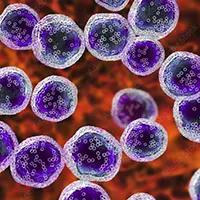Commentary
Video
Dr Dhodapkar on the Use of Linvoseltamab in Relapsed/Refractory Multiple Myeloma
Author(s):
Madhav V. Dhodapkar, MBBS, discusses efficacy and safety findings from the dose-expansion portion of the phase 2 LINKER-MM1 trial of linvoseltamab in patients with relapsed/refractory multiple myeloma.
Madhav V. Dhodapkar, MBBS, professor, Anise McDaniel Brock Chair, Department of Hematology and Medical Oncology, Georgia Research Alliance Eminent Scholar in Cancer Innovation, Emory University School of Medicine; director, Center for Cancer Immunology, leader, Cancer Immunology Research Program, Winship Cancer Institute of Emory University, discusses efficacy and safety findings from the dose-expansion portion of the phase 2 LINKER-MM1 trial (NCT03761108) of linvoseltamab (REGN5458) in patients with relapsed/refractory multiple myeloma.
The first-in-human LINKER-MM1 trial was a dose-escalation and dose-expansion study that evaluated the BCMA/CD3-directed bispecific antibody linvoseltamab in patients with relapsed/refractory multiple myeloma. Patients evaluated in the phase 2 trial were heavily pretreated with a median of 5 prior lines of therapy (range, 2-14), Dhodapkar says. In the dose-expansion cohort of the trial, patients received step-up dosing of linvoseltamab at 5 mg on day 1 and 25 mg on day 8, followed by 24 hours of hospitalization. In cycles 1 through 3, patients received 200 mg of linvoseltamab once weekly. In cycles 4 and 5, patients received 200 mg of the agent once every 2 weeks. In cycle 6 onward, patients with a very good partial response (VGPR) or better received the agent at 200 mg once every 4 weeks, and patients who did not achieve a VGPR continued to receive the agent at 200 mg once every 2 weeks.
In this cohort, linvoseltamab elicited an overall response rate of 71%. Of these patients, 59% achieved a VGPR or better, and 30% achieved a complete response or better.
Linvoseltamab was well tolerated in this population, and was associated with an acceptable safety profile, including low rates of high-grade cytokine release syndrome (CRS) and neurotoxicity, Dhodapkar explains. Any-grade CRS occurred in 45.3% of patients, and 1 patient experienced grade 3/4 CRS. Any-grade immune effector cell–associated neurotoxicity syndrome (ICANS) occurred in 7.7% of patients, and 2.6% of patients had grade 3/4 ICANS. No cases of grade 5 ICANS were reported.
These efficacy and safety data are promising and demonstrate the potential for linvoseltamab to address an unmet need for patients with relapsed/refractory multiple myeloma.









